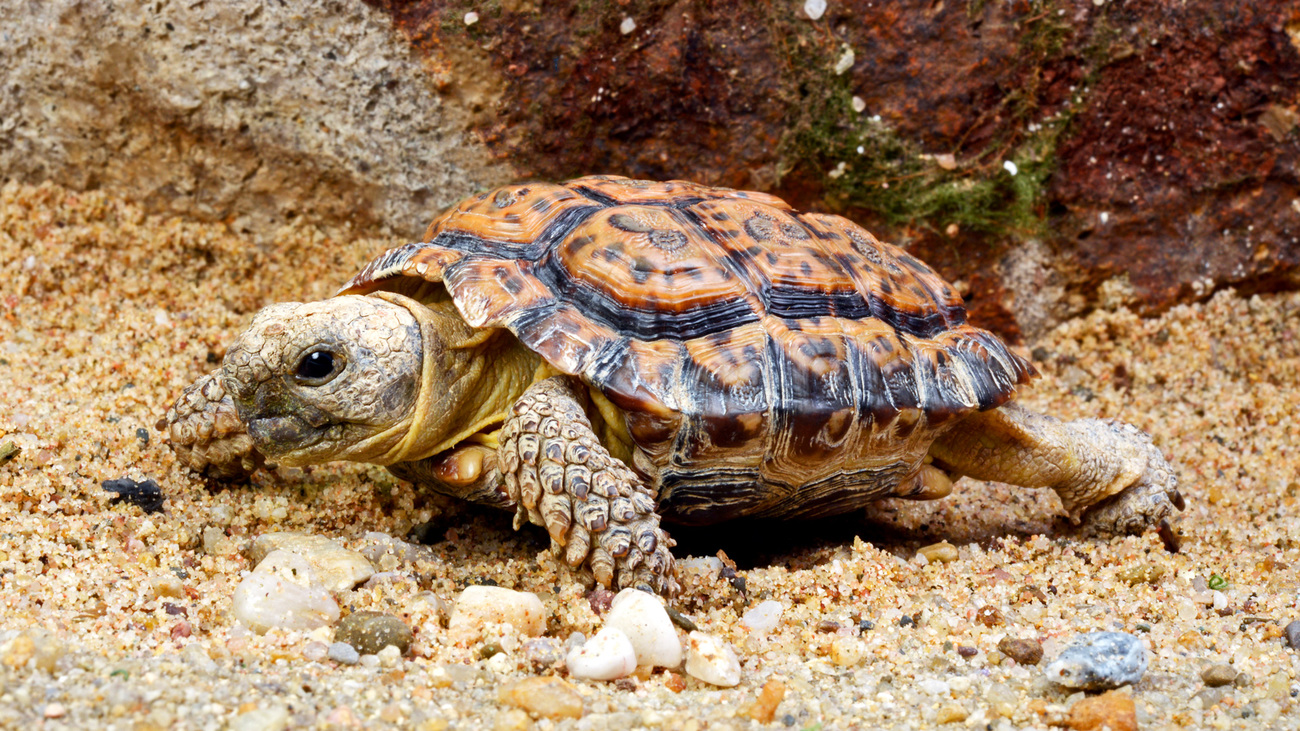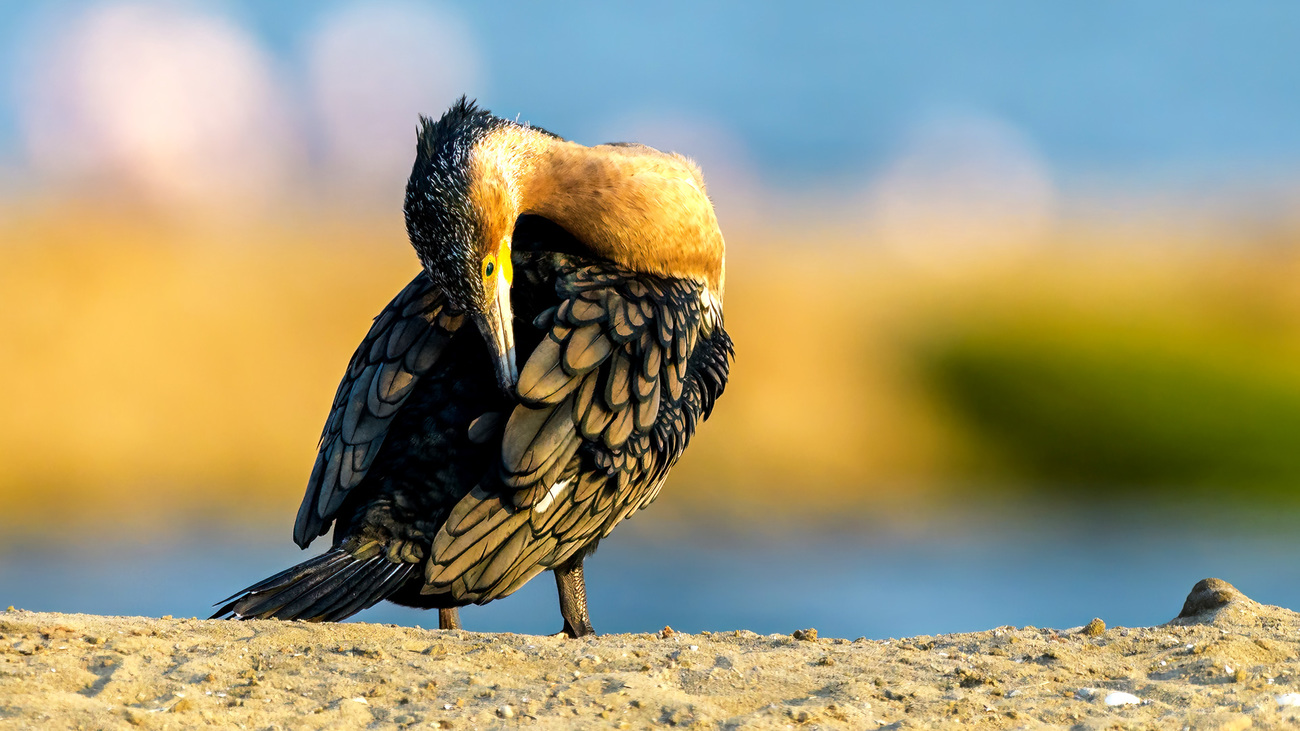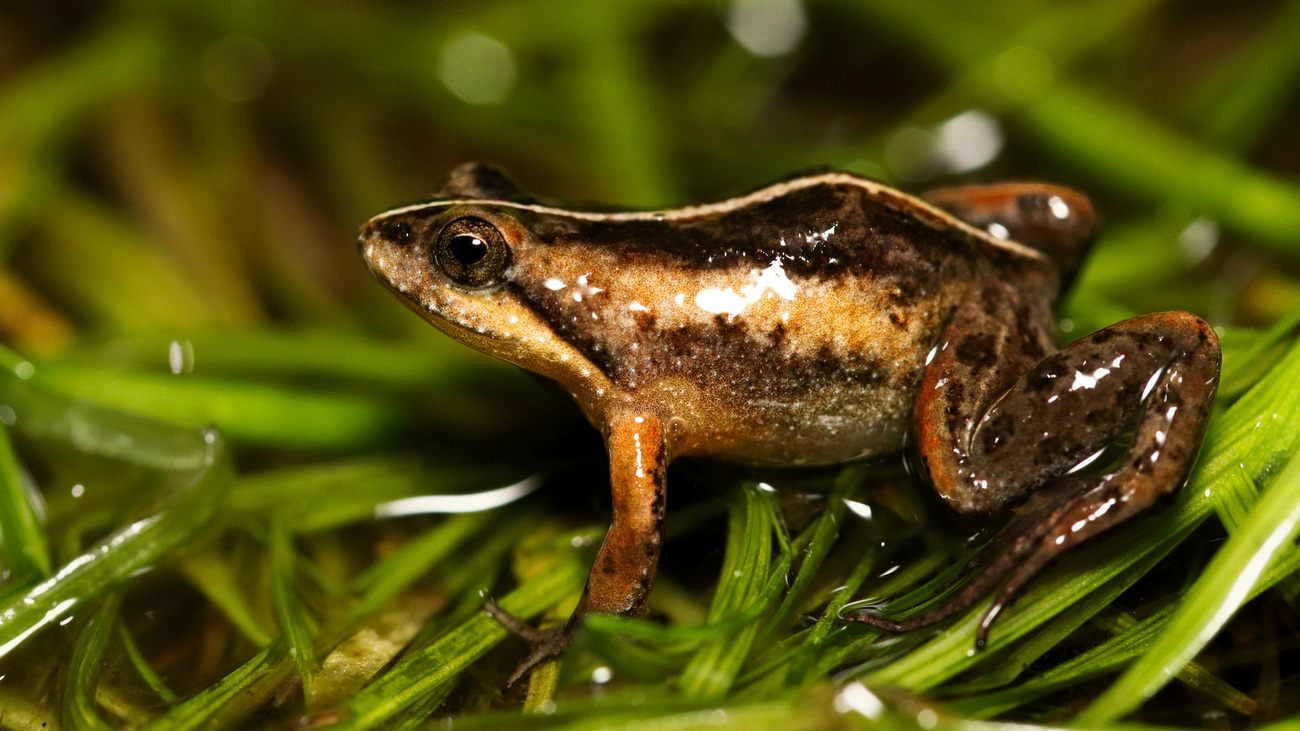Press releases
WhaleAlert: the app to help to protect whales
Read moreEndangered and threatened animals in South Africa
South Africa is home to 7% of the world’s mammal, bird, and reptile species; 10% of plant species; and 15% of marine species. Some of the world’s most iconic species—like elephants, cheetahs, and rhinos—can all be found here. South Africa is a country of impressive biodiversity with several biodiversity hotspots.
But sadly, many of South Africa’s wild animals are vulnerable to habitat loss, climate change, human activity, and other threats. In 2025, an estimated 20% of South Africa’s mammals and 10% of South Africa’s birds and frogs are at risk of extinction.
At IFAW, we’re working to protect wildlife in South Africa and around the world. We’re fighting wildlife crime and engaging local communities. We’re also working to protect and secure key landscapes for wildlife through our Room to Roam initiative.
Here is a list of some of the most endangered animal species in South Africa and the threats they face.

African penguins (Spheniscus demersus) are found along the coast of southern Africa, breeding at 28 locations in South Africa and Namibia. These penguins are important for wildlife tourism in the area, but, in 2025, they are sadly critically endangered, with just 19,800 mature individuals remaining in the wild.
One reason for their population decline is food shortages, which result from shifts in prey distribution, competition with fisheries, and climate change.
Egg collection was once a major driver of population decline for these penguins, but it is now illegal. The collection of guano—bird poop—for use as a crop fertiliser was once also a disturbance to African penguins, but it is no longer practiced in South Africa.
Climate change poses a major threat to penguins and many other animals around the world. IFAW is working to pioneer nature-based climate solutions through wildlife and marine conservation.

Cape tortoises, also known as padlopers, are tiny tortoises found in southern Africa. Two of the three species, the speckled tortoise (Chersobius signatus) and the karoo padloper (Chersobius boulengeri), are endangered.
Found in western South Africa, the speckled tortoise is the smallest tortoise in the world—males measure 6 to 8 centimetres (2.4 to 3.1 inches) in carapace length, while females grow up to 10 centimetres (3.9 inches) long.
Agricultural development, overgrazing by livestock, and an increase in mining have degraded and destroyed much of the speckled tortoise’s habitat. They are also sometimes victims of illegal trade as exotic pets. Climate change is expected to impact speckled tortoises through changing temperatures and rainfall patterns, which can negatively affect their growth rates and fecundity.
Overgrazing is also a major threat to the karoo padloper, which is found in southern South Africa, as is drought. A newer threat to the species is shale gas exploration. This industry requires large-scale infrastructure and drilling that can severely impact the habitat of tortoises.
Another of the most endangered animals in South Africa is the riverine rabbit (Bunolagus monticularis). These mammals are critically endangered, with only 157 to 207 mature individuals remaining in the wild.
They are threatened by habitat degradation and fragmentation as a result of changing land use practices. Riverine rabbits are also sometimes hunted for sport and for bushmeat, as well as being caught in traps set for pests on farms. Agricultural practices have also led to these rabbits becoming more vulnerable to predation, and climate change threatens 89% of the habitat of the northern riverine rabbit population.

In 2025, there are only 6,788 critically endangered black rhinos (Diceros bicornis) left in the world. There are very small populations of these rhinos monitored by conservationists on protected land in parts of South Africa, including a population of reintroduced eastern black rhinos in Addo Elephant National Park. The main population of south-central black rhinos lives in northeastern South Africa; this subspecies has been wiped out in much of its former range.
The primary threat to rhinos is and has historically been poaching—specifically, illegal hunting for their horns. Taking a rhino’s horn is a death sentence for the animal and a cruel practice. It’s estimated that around 95% of rhino horn traded to Southeast Asia, where horns are used in traditional medicine and for decoration, is from black rhinos. Black rhino poaching peaked in 2015 and has been declining over the past decade, but black rhinos still need to be protected from poachers.
Blue cranes (Anthropoides paradiseus) are a bird species found in South Africa and Namibia. They are classed as vulnerable, with a sharply declining population in 2025. Also known as Stanley cranes and paradise cranes, they are the national bird of South Africa.
Blue cranes have sadly faced poisoning—both unintentional and intentional—which has caused significant declines in their population. While intentional poisoning of this species has decreased, it was previously done to protect crops. Accidental poisoning continues today, as farmers soak their crops in chemicals to kill pests, and blue cranes ingest them. Climate change is also impacting agriculture, leading to practices that may cause further harm to the cranes.
In addition, collisions with powerlines, entanglement in fences, illegal capture of fledglings, predation by domestic dogs, and chicks becoming stuck in water troughs all pose threats to blue cranes.

Next on our list of South African endangered animals is the cormorant. Cormorants are medium-to-large, fish-eating seabirds with long bills and webbed feet. Two cormorant species found in South Africa are endangered—the Cape cormorant (Phalacrocorax capensis) and the bank cormorant (Phalacrocorax neglectus). There are approximately 234,000 Cape cormorants remaining, and only 5,000 bank cormorants.
The primary threat they face is a shortage of food due to commercial fishing. Oil pollution is also a threat and has caused mass die-offs of cormorants in the past. In addition, climate change is displacing their prey and impacting their breeding success, and guano mining also harms cormorant species.
Also known as the Cape seahorse, the Knysna seahorse (Hippocampus capensis) is found along a stretch of South Africa’s coast. These seahorses inhabit depths of just 0.5 to 20 metres (1.6 to 65.6 feet), and in 2025, they are listed as endangered.
Their primary habitat is the Knysna estuary, which is one of the most heavily used bodies of water in South Africa, making the species vulnerable to human activities. Urban expansion, stormwater runoff, and wastewater disposal are unfortunately polluting their habitat. Researchers also believe they are vulnerable to water temperature changes, which makes climate change a looming threat to Knysna seahorses.
Dwarf chameleons (genus Bradypodion) are small, tree-dwelling lizards and are another one of the most endangered animal species in South Africa. An interesting fact that differentiates them from most other chameleons is that the females give birth to live young as opposed to laying eggs.
Four species of South African dwarf chameleons are endangered:
As of 2025, all of these species have decreasing populations.
One threat these species face is the use of their habitat for agriculture, grazing, large-scale timber plantations, and urban development. Some species are experiencing a lack of protection, such as the Pondo dwarf chameleon, which only has 8.3 square kilometres (3.2 square miles) of formally protected habitat. All species have small, restricted ranges, which makes them particularly vulnerable to any encroachment into their habitat.
Cape vultures (Gyps coprotheres) are found across southern Africa, but they have gone extinct in many parts of their range. They’re classed as vulnerable, and there are estimated to be between 9,600 and 12,800 mature individuals left in the wild. Fortunately, this small population is reported to be increasing.
These birds fly long distances across the continent, breeding and roosting on cliffs and feeding on carrion. Researchers have determined that the most significant threats to their survival are a decrease in the amount of carrion, electrocution or collision with pylons, loss of foraging habitat, and unsustainable hunting. When they’re hunted, their parts are sold for their perceived medicinal benefits.
Accidental poisoning is also a threat. In May 2025, a single elephant carcass that was laced with poison killed 116 vultures, including Cape vultures, in South Africa’s Kruger National Park.

The Cape flats frog (Microbatrachella capensis) is a critically endangered amphibian species found in small areas near Cape Town, South Africa. It lives in sandy, coastal lowland habitats and does not survive well with human disturbance. The spread of alien vegetation alters the water quality of their habitats and dries out their breeding pools, and some of their breeding areas have been drained.
Gadfly petrels (genus Pterodroma) are seabirds known for their fast, agile flight patterns. There are two endangered gadfly petrels found in South Africa: Barau’s petrel (Pterodroma baraui) and the Atlantic petrel (Pterodroma incerta).
The range of Barau’s petrel spans from the southern point of Africa throughout the Indian Ocean as far east as Western Australia. There are 30,000 to 40,000 Barau’s petrels today, and their population is decreasing. Their biggest threat is invasive mammals—especially predation by cats. Invasive rats also prey on their eggs and chicks.
The Atlantic petrel can be found on the west coast of South Africa and the east coast of South America. There are about 1.8 million Atlantic petrels total, but their numbers are declining. Invasive mammals also pose one of the biggest threats to this species, but in this case, the predators are house mice. About 90% of the Atlantic petrel population can be found on Gough Island, and one study found that 87% of chicks didn’t survive due to being attacked by mice soon after hatching.
Many endangered species are fighting for survival across Africa. You can get to know more of them by reading about the most endangered animals in Kenya and the most endangered animals in the Congo rainforest. All these species are at risk of extinction and urgently need our help.
Protecting endangered animals is good for individual animal species—but it’s also good for the health of our planet. By preserving biodiversity, we make ecosystems more resilient, support the livelihoods of communities, and help to mitigate climate change.
Here at IFAW, we’re protecting endangered animals in South Africa through our Room to Roam initiative. Backed by 20 years of science and engagement with local communities, Room to Roam is securing and connecting habitats, creating safe passages for wildlife to travel freely through their home ranges in East and southern Africa. The positive outcomes of this far-reaching initiative will be greater biodiversity, natural resilience to climate change, and a future where animals and people can coexist and thrive.
Across our other projects, we’re fighting wildlife crime, advocating for stronger protections for animals, and working to reduce instances of human-wildlife conflict in South Africa. But to do this, we need your help.
Wondering where to start? Learn more about endangered animals in Africa—and how you can take action for wildlife.
Our work can’t get done without you. Please give what you can to help animals thrive.
Unfortunately, the browser you use is outdated and does not allow you to display the site correctly. Please install any of the modern browsers, for example:
Google Chrome Firefox Safari